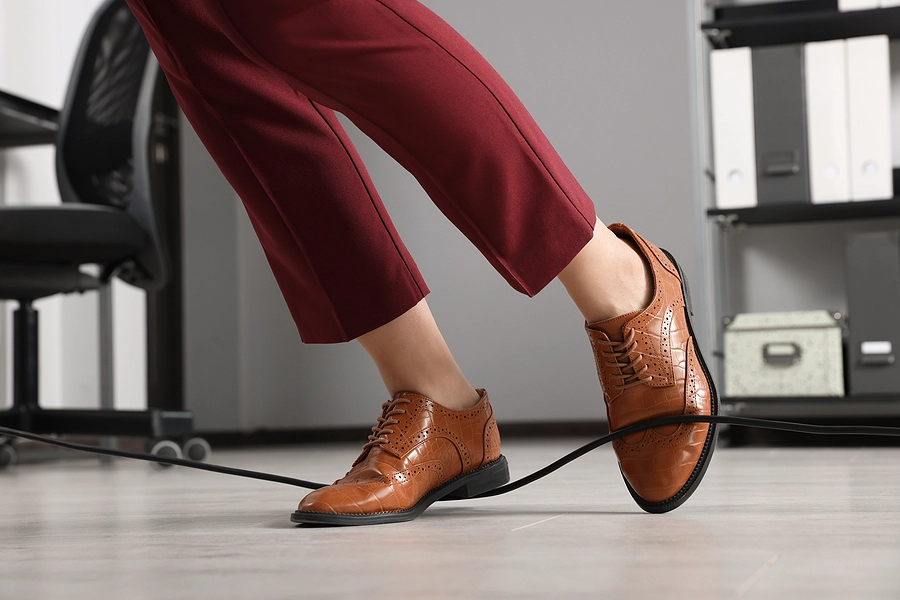Slip and Fall Lawyer Reidville

If you’ve suffered an injury from a slip and fall accident in Reidville, you may be facing pain, medical bills, and uncertainty about your next steps. At Langley Law Firm, our slip and fall lawyer understands the challenges you’re going through and is here to help you seek the compensation you deserve. With a focus on personal injury cases, we are dedicated to protecting your rights and guiding you through every aspect of your claim. Don’t let an accident disrupt your life—call us today at (864) 667-6144 for a free consultation and take the first step toward justice.
Overcoming Legal Hurdles in Proving Property Owner Negligence
When a slip and fall accident occurs on someone else’s property, proving that the property owner was negligent can be a complex process. Property owners have a duty to maintain their premises in a safe condition, but accidents can still happen due to overlooked hazards, poor maintenance, or other factors. In a personal injury claim, the burden of proving negligence falls on the injured party, and this can be a significant legal challenge.
In Reidville, as in other areas, proving property owner negligence involves more than just showing that an injury occurred. To win a slip and fall case, the injured party must demonstrate that the property owner was at fault in some way. This requires a combination of legal knowledge, careful investigation, and the ability to present compelling evidence in court.
Understanding Property Owner Liability
Before diving into the challenges, it’s important to first understand what property owner liability means. Property owners—whether they are homeowners, businesses, or government entities—are legally obligated to maintain a safe environment for visitors. When a hazardous condition exists on the property, the owner has a duty to either fix the issue or warn visitors about the danger. This is part of the broader concept of “premises liability.”
However, not all accidents on a property result from negligence. In order to hold a property owner responsible, the injured party must prove that the property owner’s negligence directly caused the accident. This is where the difficulty begins, as the law requires evidence that the owner either knew or should have known about the hazardous condition.
Common Challenges in Proving Negligence
Establishing the Property Owner’s Knowledge of the Hazard
One of the primary obstacles in a slip and fall case is proving that the property owner knew about the hazard or should have known. In many cases, property owners might argue that they were unaware of the dangerous condition, which can make it harder for the plaintiff to establish fault.
To overcome this challenge, the plaintiff must provide evidence showing that the owner had actual knowledge of the hazard or that the dangerous condition existed for a long enough period of time that the owner should have noticed and addressed it. This can involve surveillance footage, witness testimonies, or expert testimony about how long the hazard may have been present.
Proving the Hazard Was Dangerous
Not all hazards are immediately dangerous or obvious. For example, a wet floor in a retail store might be harmless if noticed and cleaned promptly, but if left untreated, it can pose a serious risk. Proving that the hazard was dangerous enough to cause harm is crucial in a negligence claim.
This often requires the use of experts who can evaluate the conditions of the accident scene and testify about the level of risk posed by the hazard. For instance, if a plaintiff slips on a poorly maintained staircase, an expert might be needed to demonstrate that the steps were not up to code or that they posed a heightened risk compared to standard safety practices.
Comparing Fault
In many slip and fall cases, the property owner’s legal team will argue that the injured party was partially at fault for the accident. In these situations, the case becomes a matter of comparative fault, where the court determines the percentage of responsibility that each party holds.
For example, if a person was not paying attention or was acting recklessly when they slipped, the property owner may argue that the plaintiff’s behavior contributed to the accident. Depending on how the court views the situation, this could reduce the amount of compensation the plaintiff is entitled to. Proving that the property owner’s negligence was the primary cause of the accident is essential to counter these claims.
Documenting the Hazard’s Duration
The length of time the hazardous condition has been present is another critical factor in establishing negligence. The longer a dangerous condition has existed without being addressed, the stronger the case for negligence. However, if the hazard was recent or unforeseeable, it can be more challenging to prove that the property owner should have taken action sooner.
In some cases, the owner might argue that they were not given enough time to address the hazard before the accident occurred. To counter this, plaintiffs need to gather evidence that shows the hazard was not new and had been present for a significant amount of time. This could include maintenance records, incident reports, or witness statements that confirm the hazard existed before the fall.
Defining Reasonable Expectations of Safety
Another challenge in slip and fall cases is determining what constitutes reasonable safety precautions. What’s considered reasonable depends on the type of property and the situation. A grocery store, for example, might be expected to promptly clean up spills to prevent accidents, but a private homeowner may not be held to the same standard.
Different types of visitors are also treated differently under the law. For example, customers who are legally on a business’s property generally have more protection than trespassers. Therefore, it’s important to establish the relationship between the injured party and the property owner to determine what level of care the owner owed the injured person. A property owner might argue that they didn’t owe the same level of care to someone who wasn’t invited onto their property or was not using it as it was intended.
Time Constraints and Statutes of Limitations
Finally, a major legal challenge in slip and fall cases is adhering to time limits imposed by state law. In South Carolina, personal injury claims, including slip and fall accidents, generally must be filed within three years of the incident. Failing to meet this deadline could result in the loss of the right to pursue compensation, regardless of the strength of the case.
To avoid missing this critical deadline, it’s important to contact a slip and fall lawyer as soon as possible after the accident. Early legal intervention can ensure that important evidence is preserved, and that all necessary paperwork is filed promptly.
Let a Slip and Fall Lawyer Fight for Your Rights in Reidville
When it comes to slip and fall accidents, you deserve a lawyer who will fight for your rights and help you recover both physically and financially. At Langley Law Firm, we are committed to providing the legal representation you need to secure the compensation you deserve. Our team of attorneys is ready to guide you through the process, ensuring your case is handled with the care and attention it deserves. Don’t face this challenge alone—contact us today at (864) 667-6144 for a free consultation and let us help you take the next step toward justice.
